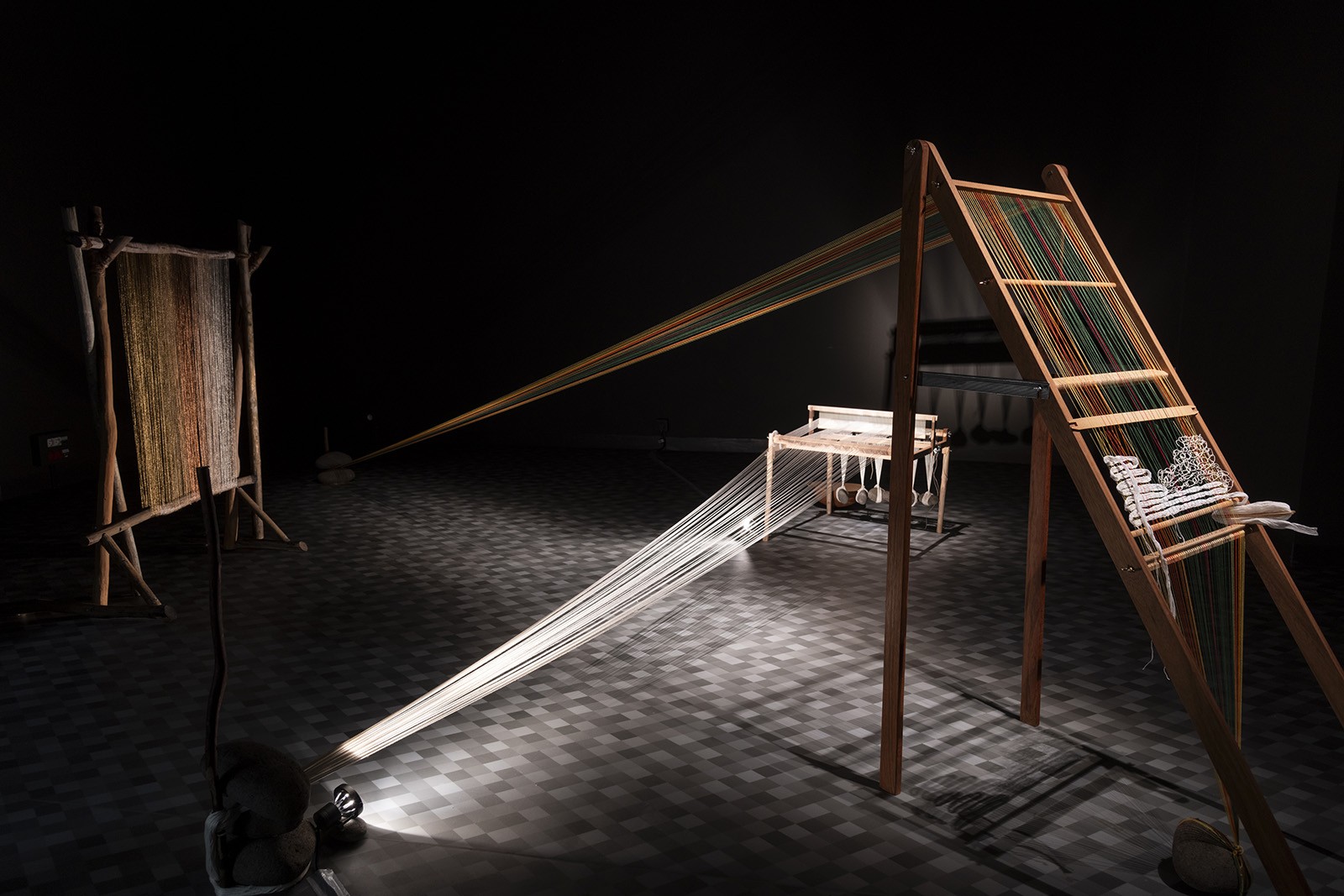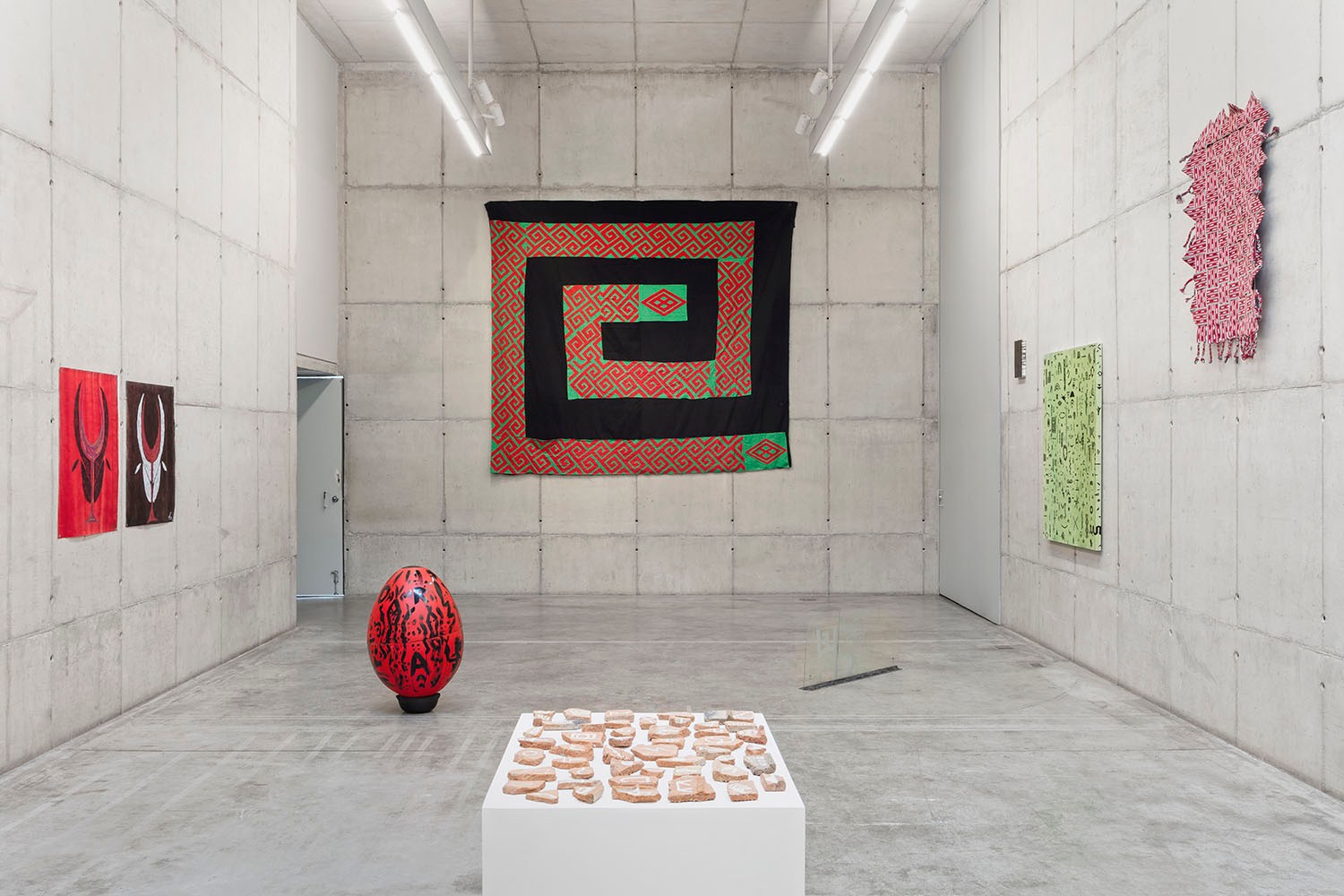Vasco Araújo opening up a critical space

14 January 2015
Magazine C& Magazine
7 min read
“I’m a woman playing as a man playing as a foreign playing as a black playing as an old playing as a dog playing as a white playing as a cat playing as a tree playing as a pen playing as an elephant playing as an arm playing as a table playing as a …
“I’m a woman playing as a man playing as a foreign playing as a black playing as an old playing as a dog playing as a white playing as a cat playing as a tree playing as a pen playing as an elephant playing as an arm playing as a table playing as a bed playing as a painting.” (1)
At first glance, it seems difficult to find Vasco Araújo in his exhibit at Baginski. The two rooms of the Lisbon gallery are more or less filled with an impressive collection of portraits painted by Eduardo Malta (1900–1967). Malta was a Portuguese artist famous for his official portraits of various figures from Portugal’s Estado Novo regime. Photographic reproductions of the paintings are hung in folding “shutter” frames with two or three sections, making them almost mobile. Vasco Araújo accompanies them with a number of recorded dialogues for the visitors to listen to using headphones “plugged into” the paintings. These headphones serve as a destabilizing audio guide. As we listen to them, we struggle to discern the connections.
The texts, read by different actors, are mostly taken from the opera A Africana by José Maria Vieira Mendes (2012). The opera was a critical rewriting of the libretto of L’Africaine by Eugène Scribe, which premiered on 28 April 1865 with a score by Giacomo Meyerbeer. The earlier opera, a major success in its day, stages fictional events in the life of the Portuguese explorer Vasco da Gama (1460–1524), the first European to reach India by sea. The story recounts da Gama’s first failed voyage, from which he bought back two enslaved “natives,” Sélika and Nélusko, as proof that he had visited a faraway foreign land. The French libretto by Eugène Scribe, with its storytelling and its approximations (particularly when it comes to geography), is a poetic evocation of an exotic “elsewhere” and evidence of the tastes of the period. Although the era of the libretto’s writing coincided with the debate about abolishing slavery, the role of these “slaves” taken back by the explorer are just as the academic Olivier Bara characterizes them: “objects of spectacle, of visual and imaginary consumption.” (2)
Vasco Araújo pairs this reinterpreted story with that of the painter Eduardo Malta, who is also significant for playing an active role in the changed vision of Portuguese colonies under the Estado Novo regime.
During that period, the colonies took on a symbolic dimension alongside their role in service of an imperial ideology. They became politically useful on another level, as their geographies and the diversity of their cultures and inhabitants embodied the grandeur of the “Portuguese world,” beliefs disseminated by propaganda especially at colonial exhibitions. The first Portuguese colonial exhibition took place at the Crystal Palace in Porto in 1934 and had fifteen sections representing the colonies with various dioramas, skits, and processions of “natives.”
Eduardo Malta was commissioned to make portraits of these different figures, incorporating colonized groups of people into his repertoire for the first time. His graphical treatment of them was similar to that used for the aforementioned figures of Estado Novo, which only served to highlight the questionable nature of these representations.
This was followed several years later the Exposição Histórica da Ocupação (1937 in Lisbon) and the Exposição do Mundo Portugues (1940 in Lisbon), accompanied by a visual and textual documentation attempting to win over the metropolis to the alleged virtues of an imperial nation.
In his representations, Eduardo Malta maintained an ideology of progress as he portrayed different levels of “Europeanism” with the intention of casting Portugal as the “saviour” or these “primitive” populations. The primary justification the country gave to legitimize its presence in these territories was a disturbing concept of its subjects being at different phases “of evolution,” seen here in the attributes encoded and staged by the artist.
After the colonial exhibition of 1934, the portraits were published as a series of postcards disseminated as “curiosities” showing pride in the “exotic” diversity contained within the “Portuguese world.” Malta’s representations supplement the colonial ideology of forcible domination with the conceptual ideology of exoticism: “Making someone inferior by exoticizing them.” (3) This process was portrayed plainly at Baginski with the sculptures Exotismo #1 and #2 (2014): two plastic “tropical” plants emitting exclamations by a man with a worldly, flamboyant voice, saying, “Oh, it’s so exotic! So exotic.”
The artist provides us different layers of trans-historical readings, illuminating histories embedded within others (4) by strategically copying, reinterpreting, rewriting, collecting, citing, and appropriating diverse sources. (In addition to the photos of paintings, artificial exotic plants, and recordings of texts, there are found objects and books (5) that combine to make the installation into a coherent whole.)
By juxtaposing the world of opera with the paintings of Eduardo Malta, Vasco Araújo continues his investigations into the construction of identities by exploring his representation of himself. The latter element was not produced by the subjects themselves, whether in the Scribe’s story or Malta’s portraits. “I don’t want to be used to create art. . . . There isn’t a word that belongs to me. I’ve lost everything. I’ve been expropriated. I have become a discourse in other people’s mouths and I am the Other. I am lost.” (6)
With this sound montage, the artist “edits” a past reality into a kind of fiction. He gives (back) a voice, augmented by a contemporary critical consciousness, to his characters, who have been gagged by their objectification. By allowing visitors to contribute to or take away from these discourses (using headsets), Araújo refrains from reenacting the propaganda maneuvers that he denounces, but instead opens up a critical space that subtly confronts our own paradigms of perception. Essentially, the seductive portraits on display, which might seem “unoffensive” to us on first glance, bring the discourse plainly to life and in some cases make us uncomfortable as we listen. It is through that very sensation of discomfort that the artist hopes to engage us in (self-)critical reflection about the attractiveness of representation strategies.
Vasco Araújo, "Re Cordum : Voltar ao Caração", 24 Sep–22 Nov 2014,Galeria Baginski, Lisbon
(1)Vasco Araújo, Re Cordum - Voltar ao Coração #4, 2014, text based on A Africana by José Maria Vieira Mendes.
(2)Olivier Bara, “Figures d’esclaves à l’opéra. Du ‘’Code noir’’ à ‘’L’Africaine’’ d’Eugène Scribe (1842-1865), les contradictions de l’imaginaire libéral.” Littérature et esclavage, XVIIIe-XIXe, directed by Sarga Moussa, Desjonquères, L’esprit des Lettres collection, Paris, 2010, pp 110–123.
(3)Eloise Aquino, “The garden of colliding meanings: a conversation with Vasco Araújo,” 2011.
(4)“Build a narrative using another narrative,” Vasco Araújo & Eloise Aquino, op. cit.
(5)Vasco Araújo, Exotismo - physiologus, 2014.
(6)Vasco Araújo, Re Cordum - Voltar ao Coração #8, 2014, text based on A Africana by José Maria Vieira Mendes.
Gauthier Lesturgie is an independent art writer and curator based in Berlin. Since 2010 he has worked within several structures and projects such as the Galerie Art&Essai (Rennes), Den Frie Centre for Contemporary Art (Copenhagen) orSAVVY Contemporary (Berlin).
Read more from

C& Highlights of 2025

Maktaba Room: Annotations on Art, Design, and Diasporic Knowledge

Irmandade Vilanismo: Bringing Poetry of the Periphery into the Bienal
Read more from

(RE)COUTURE

Lina Ben Rejeb: Pushing the Limits of Erasure
